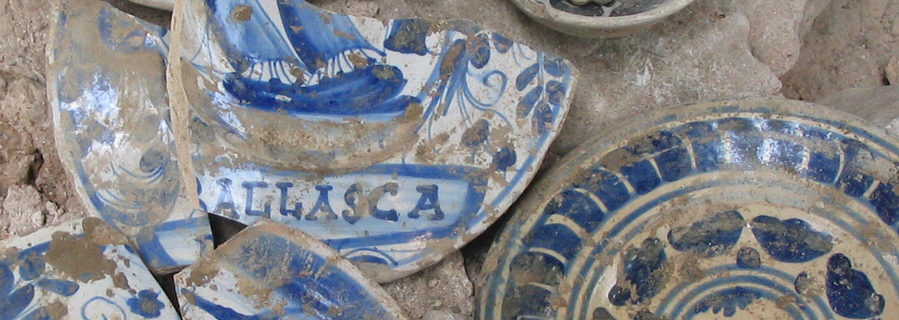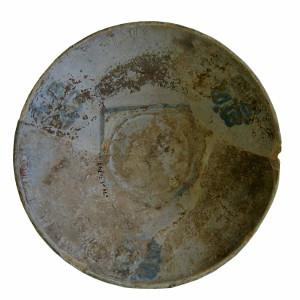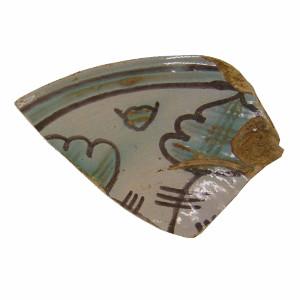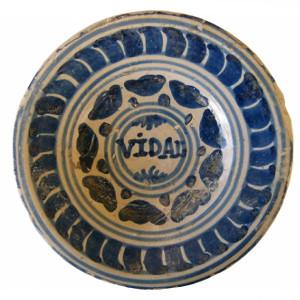
A unique archaeological site
Contemplating the archaeological site of the El Born’s old market takes you back to the everyday life of Barcelona at the end of the 17th century and start of the 18th century, and allows your eyes to trace the streets of a city that resisted the Philip V’s troops up to its capitulation on 11 September 1714.
This is a unique archaeological site, exceptional for its size, state of conservation and presented historical sequence and because historical documents have enabled us to put names to the families who lived there.
Guided tour of the archaeological site and permanent exhibition
Starting from the archaeological remains excavated around and inside the old Born market, you can visit the history of Barcelona from the Roman period to the beginning of the 18th century, when life in this part of the city remained interrupted suddenly by the outcome of the War of Success
The streets
Part of the 42 streets destroyed by the building of the Citadel and its security esplanade lie inside the El Born’s archaeological site, with sections of as many as nine different streets, to be more specific, documented.
Houses and workshops
The remains of 60 houses distributed along 11 separate blocks can be found in the El Born’s archaeological site. Some of these blocks can only be partially found, as they extended beyond the boundaries of the old market.
The archaeological site's sectors
There are three sharply differentiated parts in the archaeological site which perfectly represent the complexity of the urban and social section of the La Ribera neighbourhood from the 13th to the 18th centuries.
El Rec Comtal
El Rec Comtal is one of the archaeological site’s key pieces, as it marks the urban planning of the western half and was crucial for carrying out the crafts activities documented in this part of the La Ribera neighbourhood.

Archaeological work
Archaeological, consolidation and maintenance work on the archaeological site
An archaeological yet to be fully explored
For all its extensive and spectacular aspects today, research on the El Born archaeological site has only started and neither its surface nor depths have been fully explored. The ArqueoBorn programme is establishing several branches of research here.
When we talk of the El Born archaeological site, we often think of the 8,000 m2 of urban space frozen in time and located in the subsoil of the old market, but from an archaeological perspective, the site covers the entire area demolished to make way for building the Citadel and esplanade, totalling at least 295,705 m2.
Guided tour of the archaeological site and permanent exhibition
Archaeological site’s work, consolidation and cleaning processes

Archaeological materials
The archaeological materials recovered span a wide range of time, from the Roman period up to the destruction of the La Ribera at the start of the 18th century.
Most of the materials are ceramic, although glass and items made from iron, bronze, copper, lead, bones and stones are also documented along with wooden remains and a token amount of clothes and leather. The ceramics offer us very important information given that it enables us to date the various historical stages and interior changes of the houses there. Note the large quantity of fragments recovered in El Rec Comtal, cesspits, sewers and wells. The older ceramic material associated with the archaeological site’s structures are a series decorated in green and manganese, which correspond mainly to meat-cutting plates, platters and bowls.
Material from Valencia can be found, coinciding with the first two reforms carried out from the second half of the 14th century and start of the 15th century, notable for its decoration in cobalt blue, based with bowls covered in radial-type geometric motifs with complex palmettes and borders. The most common material at the height of the 15th century came from Valencia and was decorated in cobalt blue and metallic glints. The so-called Barcelona blue ceramics appeared in the middle of the 15th century and were developed throughout the 16th century, mostly in plates and bowls decorated in cobalt blue and with simplified plant motifs, stars, central radii and alafias. Catalan-produced bowls and plates decorated with metallic glints were also developed during the 16th century, containing painted-leaf and reticulated motifs and, from the mid-16th century on, bowls and plates decorated with brush-stroke motifs.
Towards the end of the 16th century and start of the 17th, “renaissance-influenced” plates and bowls appeared, where cobalt blue was combined with yellow. Many plates from the entire first half of the 17th century have been found decorated with different borders, and a good range of polychrome has been documented.
The central motifs vary, such as houses, women and plants.
All of the above had already appeared from the 14th century on, accompanied by a large quantity of common materials which bore a varnish in a good many cases, ranging in colour from green to brown. Practically the whole series corresponds to kitchen and storage vessels, plates, small plates, earthenware bowls, pans, lids, pitchers, jugs, clay pots, casserole dishes, pots, small pots, oil dispensers, jars, mortars, oil lamps and glasses.
Most of the material recovered from the archaeological work dates back to between the second half of the 17th century and 1717, and corresponds to Catalan blue-decorated ceramics, practically all winged plates and bowls decorated with cobalt blue and covered with white tin.
The most common motifs include finger prints, botifarra sausages, double arches and cart wheels, with varied central motifs: vessels, human figures, houses, flowers, birds, etc.
The latter materials correspond to the neighbourhood’s final years. The above-mentioned items appear alongside the Poblet series, which began to be produced during the last third of the 17th century and ended at the start of the 18th century.
There are numerous plates, bowls, tea light holders and jugs from these series, with a diverse range of borders and decorative motifs resembling the ones described in the previous paragraph.
Note the large quantity of imported material, mainly from Italy, from the region of Liguria in particular, which were found in the excavation. Other documented areas include: Montelupo, Albisola, Faenza, Savona and Pisa.
Notable recovered glass material are stems of glasses, unguent jars, oil dispensers, jugs and fragments of bottles with different brims.
The colour of the glass items varies from transparent white to several hues of green and blue. The origins of some of the archaeological site’s glass items have been documented, such as the Murano glass.
Other recovered materials include iron tools for agricultural, livestock and personal use (such as scissors, thimbles, earrings and rings), craft tools (compasses) and military tools (such as cannonballs, rifles and swords).
 Detail of two ceramic items from Valencia decorated in blue.
Detail of two ceramic items from Valencia decorated in blue. Detail of fragment decorated in green and manganese.
Detail of fragment decorated in green and manganese.
 Detail of a Catalan blue ceramic plate decorated with a finger-print motif.
Detail of a Catalan blue ceramic plate decorated with a finger-print motif.
 Detail of a Catalan blue ceramic plate decorated with a botifarra sausage motif.
Detail of a Catalan blue ceramic plate decorated with a botifarra sausage motif.
Photographer: Toni Fernández.






